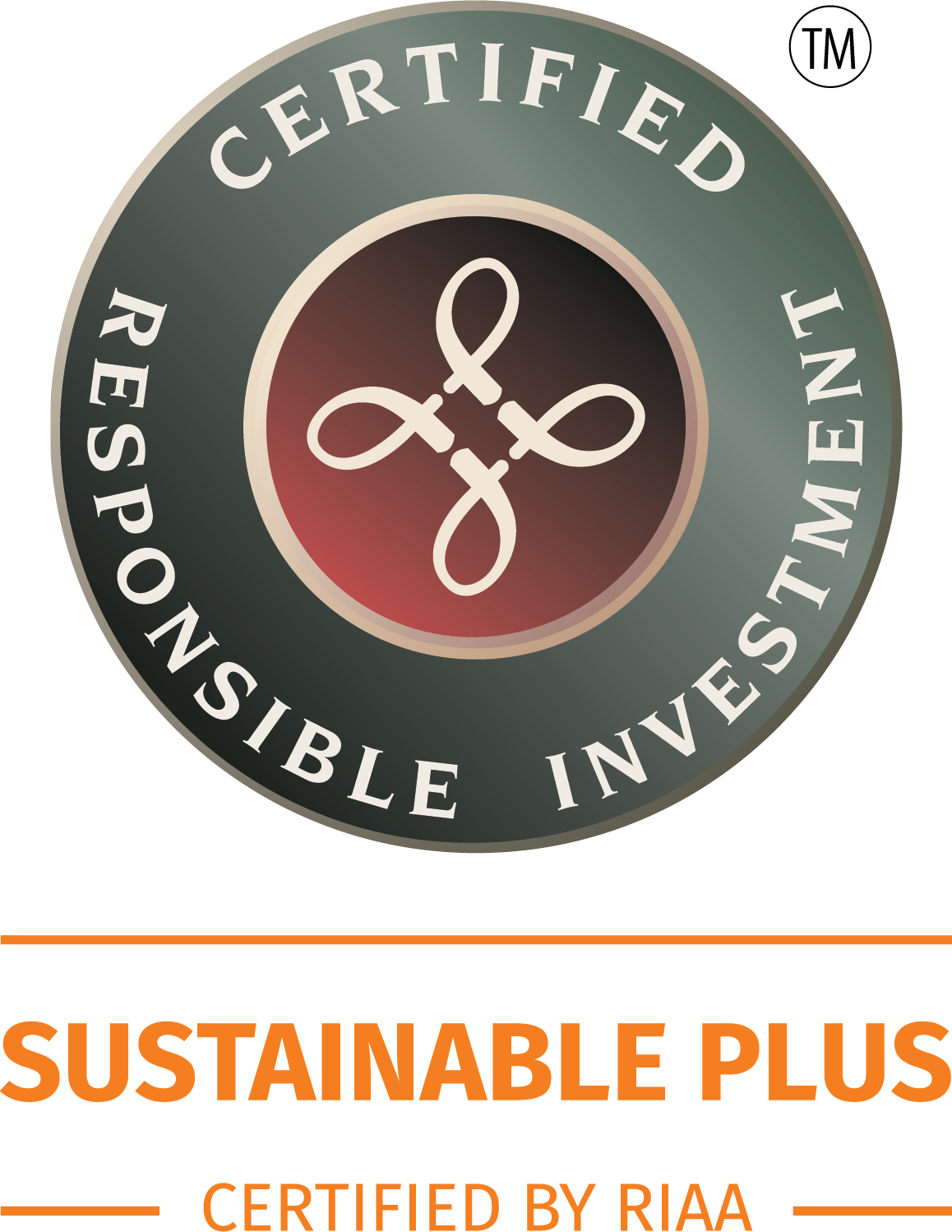What are green bonds?
The green bond market was born in 2007, when the first green bond was issued by the European Investment Bank (EIB). Since then, it has developed very rapidly, counting supranational bodies, corporations, financial institutions, administrations, and public entities and governments among the issuers. In just a decade, green bonds have grown to become a significant international market, attracting the attention of investors engaged in the decarbonisation of assets.
Today, there is still no standard for green bonds. The International Capital Markets Association (ICMA), however, has established the Green Bond Principles, a set of guidelines made available to green bond issuers emphasising that the proceeds from these bonds must be used for projects that are of environmental interest and stressing the importance of transparent reporting.
Case study: Green bonds in action
Why consider investing in green bonds?
The green bond universe has changed significantly since the first issue in 2007. The 2015 Paris Conference on Climate Change (COP21), which set in motion the transition to a low-carbon economy, was a defining moment in this regard. Since then, a series of regulatory changes have been initiated, resulting in increased investor awareness of environmental issues. Green bonds have clearly benefited from this global commitment and the investment universe has grown remarkably.
As a result, green bonds have increasingly attracted the attention of investors engaged in the decarbonisation of their assets, due to the objectives set by the Paris Agreement. They are a potentially attractive instrument for both issuers and investors. On the one hand, the issuer attests to their commitment the energy transition. On the other hand, investors benefit from increased transparency as issuers undertake to publish an annual report setting out the evolution and impact of the financed projects.
As the green bond market grows, the list of issuers, regions and sectors is becoming increasingly diversified, and therefore more attractive to investors. This growing diversification along with a good balance between private and public issuers now enables the universe to offer a potentially attractive risk/return profile, making it a credible alternative to the conventional bond universe.
Green bonds may provide a transparent tool to finance environmentally-friendly projects at no additional cost. The price of a bond normally reflects the financial risk associated with its issuer – the same applies to a green bond. So, there is no justified structural difference in terms of issue price or financial performance between a green bond and its traditional equivalent. Investors may therefore have the opportunity to add transparency and environmental impact to their portfolio without taking additional risks or paying a higher price.
Our Green Bonds strategy
At AXA IM, our green bond strategy is actively managed with a Sustainable Investment objective, contributing to financing of the energy and ecology transition and demonstrating a positive environmental impact. It is a purist approach which combines our extensive resources in global, active fixed income investing with our proprietary green bond framework and ESG scoring methodology.
Not all green bonds are equal, and it is essential to have a rigorous approach to ensure a real environmental benefit and avoid supporting any ‘green-washing’. At AXA IM, we have developed our own framework for assessment. This framework not only drives responsible investments towards authentic green projects but also looks to raise the standards of the whole market. Our analysts meet many issuers to discuss their businesses and to explain our framework. We also often use these opportunities to engage the issuers by sharing market best practices and areas where they can strengthen their sustainable financing approach. Our goal is to highlight what we expect from them in terms of their issuance, and if necessary, help them improve their broader sustainability related strategy.
Research ratings
Qualitative Ratings

| 
|
| As of 18 March 2025 | As of 28 October 2025* |
For investors aiming for more sustainable outcomes through ESG integration

The Zenith Investment Partners (ABN 27 103 132 672, AFS Licence 226872) (“Zenith”) rating (assigned ETL9010AU 18 March 2025) referred to in this piece is limited to “General Advice” (s766B Corporations Act 2001) for Wholesale clients only. This advice has been prepared without taking into account the objectives, financial situation or needs of any individual, including target markets of financial products, where applicable, and is subject to change at any time without prior notice. It is not a specific recommendation to purchase, sell or hold the relevant product(s). Investors should seek independent financial advice before making an investment decision and should consider the appropriateness of this advice in light of their own objectives, financial situation and needs. Investors should obtain a copy of, and consider the PDS or offer document before making any decision and refer to the full Zenith Product Assessment available on the Zenith website. Past performance is not an indication of future performance. Zenith usually charges the product issuer, fund manager or related party to conduct Product Assessments. Full details regarding Zenith’s methodology, ratings definitions and regulatory compliance are available on our Product Assessments and at Fund Research Regulatory Guidelines (https://www.zenithpartners.com.au/our-solutions/investment-research/fund-research-regulatory-guidelines/).
*The rating issued 10/2025 is published by Lonsec Research Pty Ltd ABN 11 151 658 561 AFSL 421 445 (Lonsec). Ratings are general advice only, and have been prepared without taking account of your objectives, financial situation or needs. Consider your personal circumstances, read the product disclosure statement and seek independent financial advice before investing. The rating is not a recommendation to purchase, sell or hold any product. Past performance information is not indicative of future performance. Ratings are subject to change without notice and Lonsec assumes no obligation to update. Lonsec uses objective criteria and receives a fee from the Fund Manager. Visit lonsec.com.au for ratings information and to access the full report. © 2025 Lonsec. All rights reserved.
The Certification Symbol is issued by Responsible Investment Association Australasia (RIAA) ACN (641 046 666), AFSL (554110) and signifies that a product or service offers an investment style that takes into account environmental, social, governance or ethical considerations and that AXA IM Green Bond Fund adheres to the operational and disclosure practices required under the Responsible Investment Certification Program for the category of Product. The classification signifies the degree to which sustainability is a consideration and binding investment criteria. The AXA IM Green Bond Fund is assessed against RIAA’s Responsible Investment Standard and Assessment Note-Sustainability Classifications. There may be material differences between the definition and methodology of RIAA's classification system and the way the terms 'Responsible'/'Sustainable'/'Sustainable Plus' are used by the product in its own disclosures. For detailed information about RIAA, the Symbol and AXA IM Sustainable Equity Fund’s methodology, performance, stock holdings, remuneration and details about other responsible investment products certified by RIAA, refer to www.responsiblereturns.com.au and our Financial Services Guide.1
- https://www.axa-im.com.au/responsible-investing/sustainable-equity-strategy
Our green bond framework
Using AXA IM’s green bonds framework, we seek to invest only in those green bond projects which provide a material benefit to the environment. The aim is that only the most relevant and impactful projects receive the necessary financing.
Our proprietary framework is composed of four pillars for choosing an investment:
- Does the green bond fit with the bond issuer’s environmental objectives?
- Will the project have a clear impact beyond the issuer’s business as usual?
- Do we know that the proceeds will finance what they are supposed to?
- How does the issuer plan to track the progress of the project and measure impact?

Green, social and sustainability bonds
An update on our assessment framework
View frameworkWe focus on bonds which provide benefits in one of four key environmental themes:
- Smart energy solutions
- Low carbon transportation
- Green buildings
- Sustainable ecosystems
We aim to provide transparent and measurable impact metrics focused on UN Sustainable Development Goals contribution towards environmental and societal issues, including:
- 3- Good health and well-being
- 8- Decent work and economic growth
- 11- Sustainable cities and communities
- 13- Climate action
The targeting of specific SDGs does not imply the endorsement of the United Nations of AXA Investment Managers, its products or services, or of its planned activities and does not constitute, explicitly or implicitly, a recommendation for an investment strategy.
What are some of the risks associated with this strategy
Interest rate risk: The market value of financial instruments invested may change in response to fluctuations in interest rates.
Credit risk: The ability of the issuer of securities to honour its commitments depends on the financial condition of the issuer. An adverse change in the financial condition of the issuer could lower the quality of the securities, leading to greater price Volatility of the securities. The strategy may be subject to the risk that the issuer of securities is not making payment on interest and principal of the securities, causing the value of the investment to go down.
Rating downgrade risk: Downgrades of a rating of securities issue or issuer may lead to a drop in the value of securities. Such securities may have less liquidity, making it more difficult to sell and their values may be more volatile.
Please note all investments carry risks. Including but not limited to interest rate risk, credit risk, rating downgrade risk, sub-investment grade debt securities (High Yield) risk, global investment risk, emerging markets risk, ESG risk, derivatives and leverage risk, market risk, liquidity risk, operations risk and pandemic and other unforeseen event risk. For additional information, please read the product disclosure statement.
Sustainable Investing
We aim to enable our clients to invest in the companies and projects leading the transition to a more sustainable world.

Clean Tech
Innovative companies are creating solutions to address pressures on scarce natural resources and the need for greenhouse gas emission reduction.

Sustainable Equity
An actively managed global equity strategy following a factor-based investment approach – while actively investing in a sustainable way.

Our responsible investing approach
Discover more about responsible investing with AXA Investment Managers
Find out moreDisclaimer
Equity Trustees Limited (“Equity Trustees”) (ABN 46 004 031 298), AFSL 240975, is the Responsible Entity for AXA IM Sustainable™ Equity Fund, AXA IM Clean Economy Equity Fund and AXA IM Global Green Bond Fund. Equity Trustees is a subsidiary of EQT Holdings Limited (ABN 22 607 797 615), a publicly listed company on the Australian Securities Exchange (ASX: EQT).
This promotional material has been prepared by AXA Investment Managers Australia Limited (ABN 47 107 346 841 AFSL 273320) (‘AXA IM’) to provide you with general information only. In preparing this advertisement, we did not take into account the investment objectives, financial situation or particular needs of any particular person. It is not intended to take the place of professional advice and you should not take action on specific issues in reliance on this information. Neither AXA Investment Managers, Equity Trustees nor any of its related parties, their employees or directors, provide and warranty of accuracy or reliability in relation to such information or accepts any liability to any person who relies on it. Past performance should not be taken as an indicator of future performance. You should obtain a copy of the Product Disclosure Statement before making a decision about whether to invest in this product.
Equity Trustees Limited (“Equity Trustees”) (ABN 46 004 031 298), AFSL 240975, is the Responsible Entity for AXA IM Sustainable™ Equity Fund, AXA IM Clean Economy Equity Fund and AXA IM Global Green Bond Fund. Equity Trustees is a subsidiary of EQT Holdings Limited (ABN 22 607 797 615), a publicly listed company on the Australian Securities Exchange (ASX: EQT).
This promotional material has been prepared by AXA Investment Managers Australia Limited (ABN 47 107 346 841 AFSL 273320) (‘AXA IM’) to provide you with general information only. In preparing this advertisement, we did not take into account the investment objectives, financial situation or particular needs of any particular person. It is not intended to take the place of professional advice and you should not take action on specific issues in reliance on this information. Neither AXA Investment Managers, Equity Trustees nor any of its related parties, their employees or directors, provide and warranty of accuracy or reliability in relation to such information or accepts any liability to any person who relies on it. Past performance should not be taken as an indicator of future performance. You should obtain a copy of the Product Disclosure Statement before making a decision about whether to invest in this product.
This website is published by AXA Investment Managers Asia (Singapore) Ltd (ARBN 115203622) (“AXA IM Asia”). AXA IM Asia is exempt from the requirement to hold an Australian Financial Services License and is regulated by the Monetary Authority of Singapore under Singaporean laws, which differ from Australian laws. AXA IM Asia offers financial services in Australia only to residents who are “wholesale clients" within the meaning of Corporations Act 2001 (Cth).
This publication is for informational purposes only and does not constitute investment research or financial analysis relating to transactions in financial instruments, nor does it constitute on the part of AXA Investment Managers or its affiliated companies an offer to buy or sell any investments, products or services, and should not be considered as solicitation or investment, legal or tax advice, a recommendation for an investment strategy or a personalized recommendation to buy or sell securities.
Due to its simplification, this publication is partial and opinions, estimates and forecasts herein are subjective and subject to change without notice. There is no guarantee forecasts made will come to pass. Data, figures, declarations, analysis, predictions and other information in this publication is provided based on our state of knowledge at the time of creation of this publication. Whilst every care is taken, no representation or warranty (including liability towards third parties), express or implied, is made as to the accuracy, reliability or completeness of the information contained herein. Reliance upon information in this material is at the sole discretion of the recipient. This material does not contain sufficient information to support an investment decision.
All investment involves risk , including the loss of capital. The value of investments and the income from them can fluctuate and investors may not get back the amount originally invested.
Disclaimer
BNP Paribas Group's acquisition of AXA Investment Managers was completed on 1 July 2025, and AXA Investment Managers is now part of BNP Paribas Group.
This website is published by AXA Investment Managers Australia Ltd (ABN 47 107 346 841 AFSL 273320) (“AXA IM Australia”) and is intended only for professional investors, sophisticated investors and wholesale clients as defined in the Corporations Act 2001 (Cth).
This publication is for informational purposes only and does not constitute investment research or financial analysis relating to transactions in financial instruments, nor does it constitute on the part of AXA Investment Managers or its affiliated companies an offer to buy or sell any investments, products or services, and should not be considered as solicitation or investment, legal or tax advice, a recommendation for an investment strategy or a personalized recommendation to buy or sell securities.
Market commentary on the website has been prepared for general informational purposes by the authors, who are part of AXA Investment Managers. This market commentary reflects the views of the authors, and statements in it may differ from the views of others in AXA Investment Managers.
Due to its simplification, this publication is partial and opinions, estimates and forecasts herein are subjective and subject to change without notice. There is no guarantee forecasts made will come to pass. Data, figures, declarations, analysis, predictions and other information in this publication is provided based on our state of knowledge at the time of creation of this publication. Whilst every care is taken, no representation or warranty (including liability towards third parties), express or implied, is made as to the accuracy, reliability or completeness of the information contained herein. Reliance upon information in this material is at the sole discretion of the recipient. This material does not contain sufficient information to support an investment decision.
All investment involves risk , including the loss of capital. The value of investments and the income from them can fluctuate and investors may not get back the amount originally invested.






